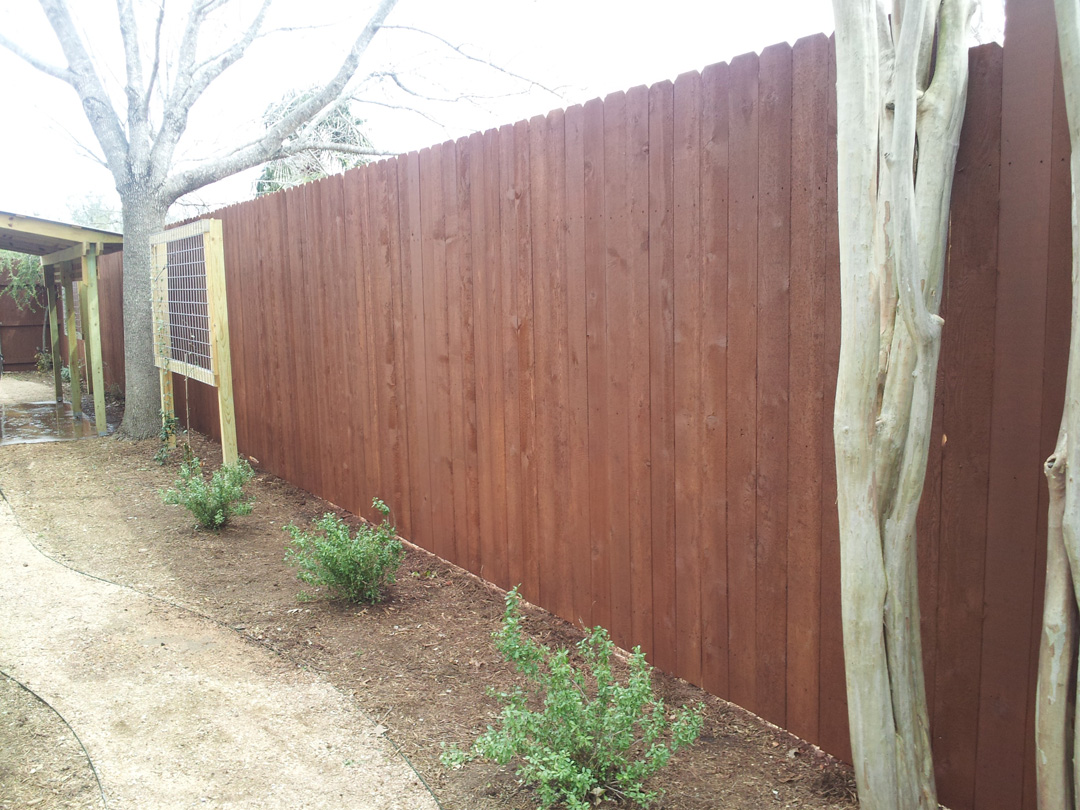The Ultimate Overview to Fencing Discoloration: Tips and Techniques You Required to Know
In the realm of home maintenance, fencing discoloration frequently arises as a job that calls for focus but is often forgotten. The procedure involves greater than just slapping on a coat of stain; it demands precision, expertise, and the appropriate techniques to guarantee a durable and aesthetically attractive outcome. Whether you are a skilled do it yourself fanatic or a homeowner looking to enhance the aesthetic charm of your home, comprehending the nuances of fence staining can make a significant difference. Let's explore the intricacies of this seemingly uncomplicated yet remarkably complicated job to open the tricks that can transform your fence from a plain border to a standout feature of your outdoor space.
Advantages of Fence Staining
What benefits does fence staining deal to property owners seeking to boost both the appearance and durability of their exterior structures? Fence discoloration gives many advantages that make it a popular option for home owners looking to protect and enhance their fencings.
In addition, fence discoloration aids to protect the wood from the components, such as rain, snow, and UV rays. This security not just avoids the timber from deteriorating and rotting yet additionally extends its life expectancy, saving property owners cash on pricey fixings or replacements over time. Fence Staining. Furthermore, tarnishing develops a barrier against insects, such as termites and woodworker ants, which can create substantial damage to neglected wood fencings
Picking the Right Discoloration

Another variable to think about is the degree of security you want for your fence. Clear stains give very little defense against UV rays and wetness, while semi-transparent and solid spots offer boosted defense. If your fence is revealed to rough weather, a solid tarnish could be the very best option to make certain maximum resilience.

Preparing Your Fence
Previous to using the chosen discolor, comprehensive prep work of the fencing surface is necessary to ensure ideal outcomes. Begin by cleaning the fence to eliminate dust, particles, and any old discolor or repaint. Make required repair work to make sure the fencing is structurally sound.
After cleaning and repairing, it is vital to sand the fencing to create a smooth surface for the discolor to follow. Make use of a medium-grit sandpaper to remove any rough patches or flaws. Clean down the fencing with a tack towel to remove any staying dirt fragments.
Using the Discoloration

When applying the tarnish, work carefully section by section, beginning with the top and relocating downwards to prevent drips and make sure even coverage. Usage long, smooth strokes to use the stain towards the timber grain, permitting far better penetration and a more specialist coating. Make sure to preserve a damp edge to prevent lap marks and overlap each stroke a little to mix the stain flawlessly. Once the very first layer is total, allow it to dry according to the maker's guidelines prior to choosing if a 2nd layer is necessary for added security and durability.
Preserving Your Stained Fence
To make sure the longevity and aesthetic appeal of your tarnished fence, normal maintenance is important. Additionally, it is vital to keep track of the sealer on your discolored fencing and reapply it as required to safeguard the wood from wetness and UV damages. By following these upkeep tips, you can make sure that your tarnished fence continues to be in top condition for years to come.
Verdict
To conclude, fencing staining provides numerous advantages such as security versus weathering and boosting the aesthetic charm of your building. By selecting the appropriate stain, correctly preparing your fencing, applying the stain correctly, and maintaining it regularly, you can ensure your fence stays navigate to this site in leading problem for several years to come. Complying with these ideas and strategies will certainly assist you attain a wonderfully discolored fencing that will certainly stand the examination of time.